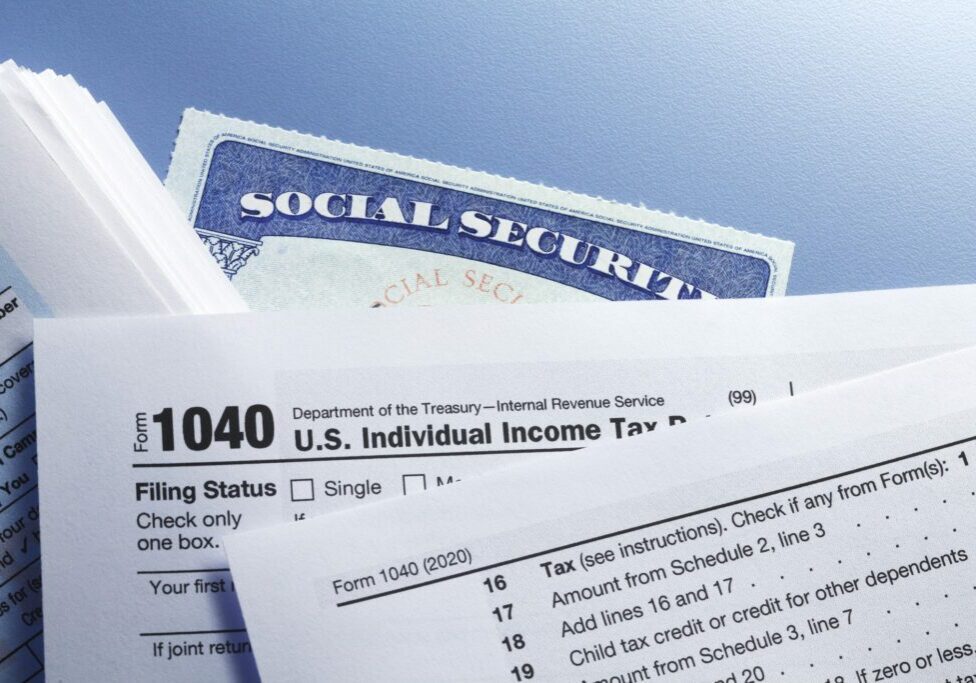Can You Claim Your Parent as a Dependent?

| If you pay over half the cost of supporting a parent, your parent is considered your dependent for federal income tax purposes. This treatment potentially entitles you to some significant tax breaks. Here are four potential benefits to consider when you file your 2023 federal income tax return. How Many Taxpayers Are Affected? According to the Pew Research Center, about one-third (32%) of all adults with a parent age 65 or older say that they’ve given a parent financial support in the past 12 months. “Of those who have given this type of support, a strong majority (72%) say it went toward ongoing expenses,” the center added. 1. HOH Filing Status For unmarried individuals, a common — and costly — misstep is filing as a single taxpayer when more favorable head of household (HOH) filing status is allowed. Compared to single taxpayers, heads of households are entitled to wider tax brackets for the first three brackets and bigger standard deductions. (See “2023 Tax Rates and Brackets for Individuals,” below.) So, using HOH filing status can save you significant tax dollars. If you’re unmarried and pay over half the cost of maintaining your dependent parent’s principal home for the year, you can use beneficial HOH filing status based on your dependent parent. There’s no requirement for you and your dependent parent to live in the same household. In addition to paying over half of your parent’s support, your parent must pass a gross income test to be treated as your dependent for HOH filing status eligibility purposes. Your dependent parent passes the gross income test for 2023 if he or she has gross income of no more than $4,700 for the year ($5,000 for 2024). Any tax-free Social Security benefits are excluded from your parent’s gross income for purposes of this test. However, those tax-free benefits must be considered in determining if you pay over half of your parent’s support. For example, Ann is unmarried, and she pays over half the support for her widowed father and over half the cost of maintaining her father’s home for 2023. Ann’s father lives in his own home. His gross income for 2023 consists of $20,000 of tax-free Social Security benefits and $4,000 of interest income, all of which he uses for his own support. Ann’s father qualifies as her dependent for HOH filing status eligibility purposes because: Ann’s father passes the gross income test, which excludes Social Security benefits from the calculation, Ann pays over half of his support for the year, and Ann pays over half the cost of maintaining her father’s home for the year. 2. Nonchild Dependent Credit For 2018 through 2025, the Tax Cuts and Jobs Act (TCJA) established a $500 federal income tax credit for dependents who don’t qualify for the child tax credit. A dependent parent can make you eligible for this $500 credit. However, your parent must pass the aforementioned gross income test to be classified as your dependent for purposes of this credit. You must also pay over half of your parent’s support. Unfortunately, the credit is phased out for taxpayers with adjusted gross income (AGI) above $200,000 ($400,000 for a married couple that files jointly). The credit is reduced by $50 for every $1,000 that your AGI exceeds this threshold. 3. Dependent Care Credit Taxpayers with one or more qualifying individuals may also be eligible for the dependent care credit. This credit covers eligible expenses that you pay to care for one or more qualifying individuals so you can work, or if you’re married, so both you and your spouse can work. Qualifying individuals can include a dependent parent who lives with you for over half the year and who’s physically or mentally incapable of self-care. The credit rate is generally 35% of eligible expenses up to a maximum credit of $1,050 for each qualifying dependent if you pay at least $3,000 of eligible expenses for 2023 (35% times $3,000). However, if your AGI exceeds $43,000, the credit rate falls to 20% of eligible expenses, for a maximum credit of $600 for each qualifying dependent if you pay at least $3,000 of eligible expenses for 2023 (20% times $3,000). 4. Medical Expense Deduction You can claim an itemized deduction for medical expenses paid for you, your spouse and your dependents to the extent those expenses exceed 7.5% of your AGI. Clearing the 7.5%-of-AGI hurdle is easier when you’re paying significant medical expenses for a dependent parent. You must pay over half of your parent’s support for your parent to be classified as your dependent for medical expense deduction purposes. Important: The gross income test doesn’t apply when determining if your parent is your dependent for medical expense deduction purposes. However, to claim deductions for a dependent parent’s medical expenses, you must make direct payments to medical service providers. You can’t deduct medical expenses if your parent paid the bills, and you later reimbursed the cost. For itemized medical expense deduction purposes, your dependent parent’s medical expenses can include (but aren’t limited to) visits to doctors and dentists, hospital care, prescription drugs, eyeglasses, dentures, and the following: Health insurance premiums, Out-of-pocket medical expenses, including insurance co-payments, deductibles, and expenditures for dental and vision care, and Qualified long-term care (LTC) insurance premiums. Premiums for qualified LTC insurance policies count as medical expenses for itemized deduction purposes, subject to the following age-based limits:2023 Age-Based LTC Premium LimitsAge as of December 31, 2023 Maximum LTC Premium Deduction 40 or younger$48041 – 50 $89051 – 60$1,79061 – 70$4,77071 or older $5,960 For each covered person, qualifying medical expenses may include the lesser of: LTC premiums actually paid, or The applicable age-based limit. To determine if you incurred enough medical expenses to claim an itemized deduction, add up all the qualifying medical expenses for you, your spouse and your dependents — including your dependent parent, if applicable. To itemize, your total itemized deductions must exceed your allowable standard deduction. 2023 Basic Standard DeductionsFiling StatusStandard Deduction Single$13,850 HOH $20,800 Married Joint Filers $27,700 For a single taxpayer or head of household who’s 65 or over or blind, the additional standard deduction for 2023 is $1,850. For 2023, the additional standard deduction for married taxpayers 65 or over or blind is $1,500. The basic and additional standard deductions are adjusted annually for inflation. Helping Your Parent Can Help Lower Your Taxes Taking care of your parent financially can qualify you for some well-deserved tax breaks. Don’t miss out when you file your 2023 tax return. Contact your tax advisor if you have questions or want more information. Thanks to inflation adjustments, the thresholds for the 2024 federal income tax brackets for individual taxpayers are about 5% higher than the 2023 thresholds. This means that, other things being equal and assuming that the current federal income tax rules remain in place through next year, you can earn about 5% more taxable income next year without being pushed into higher tax brackets. |








